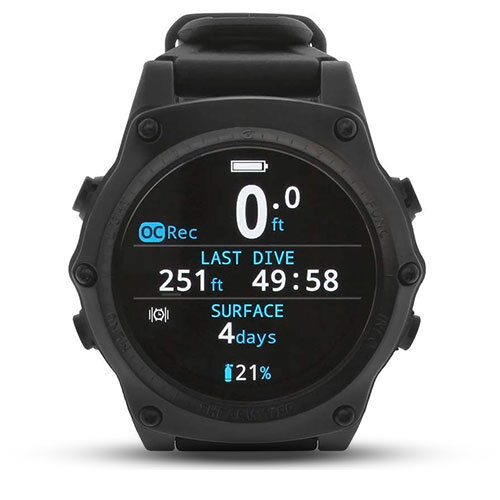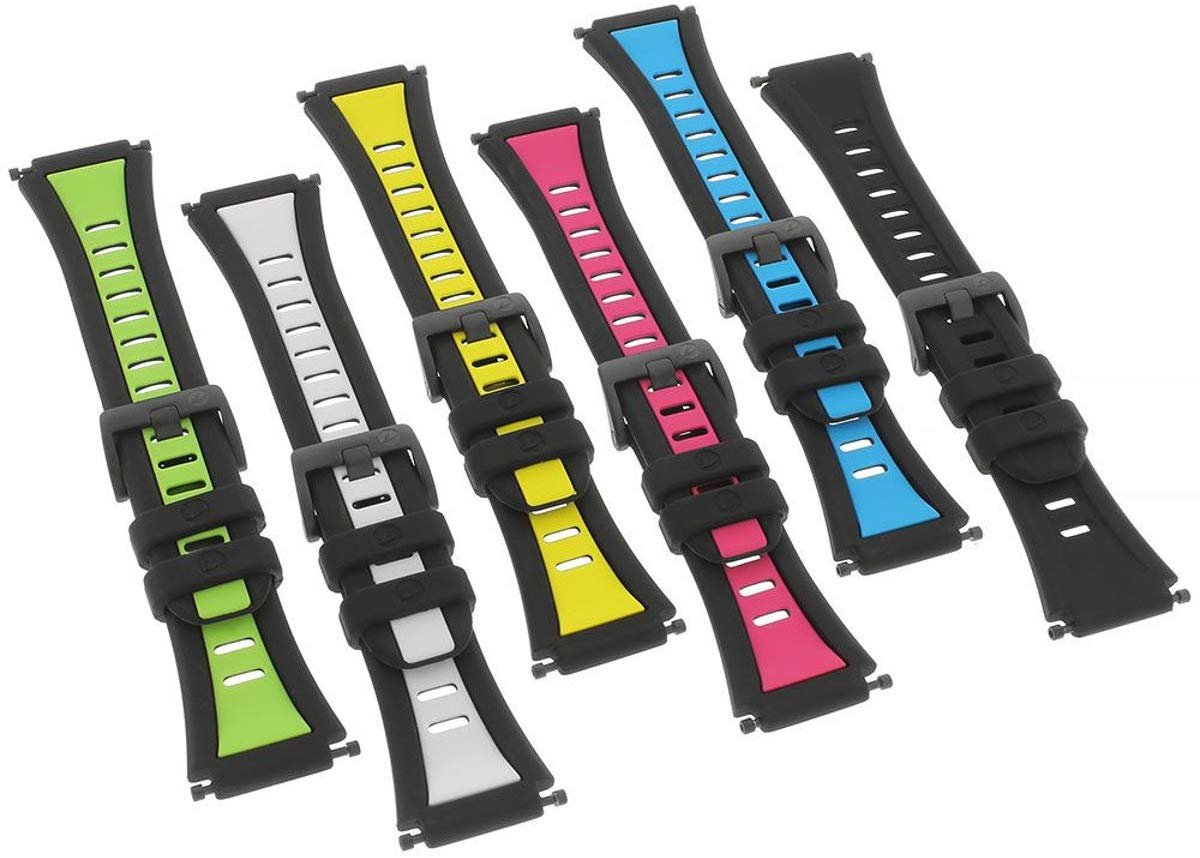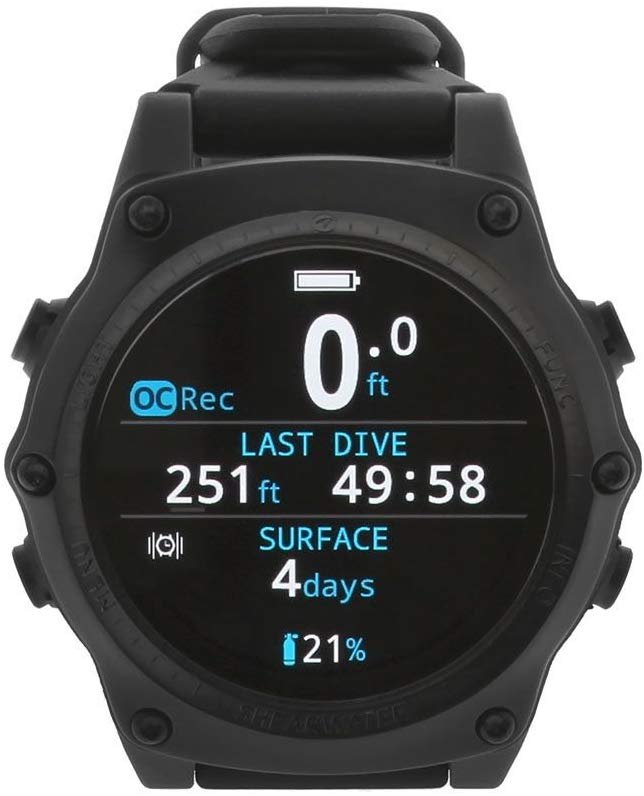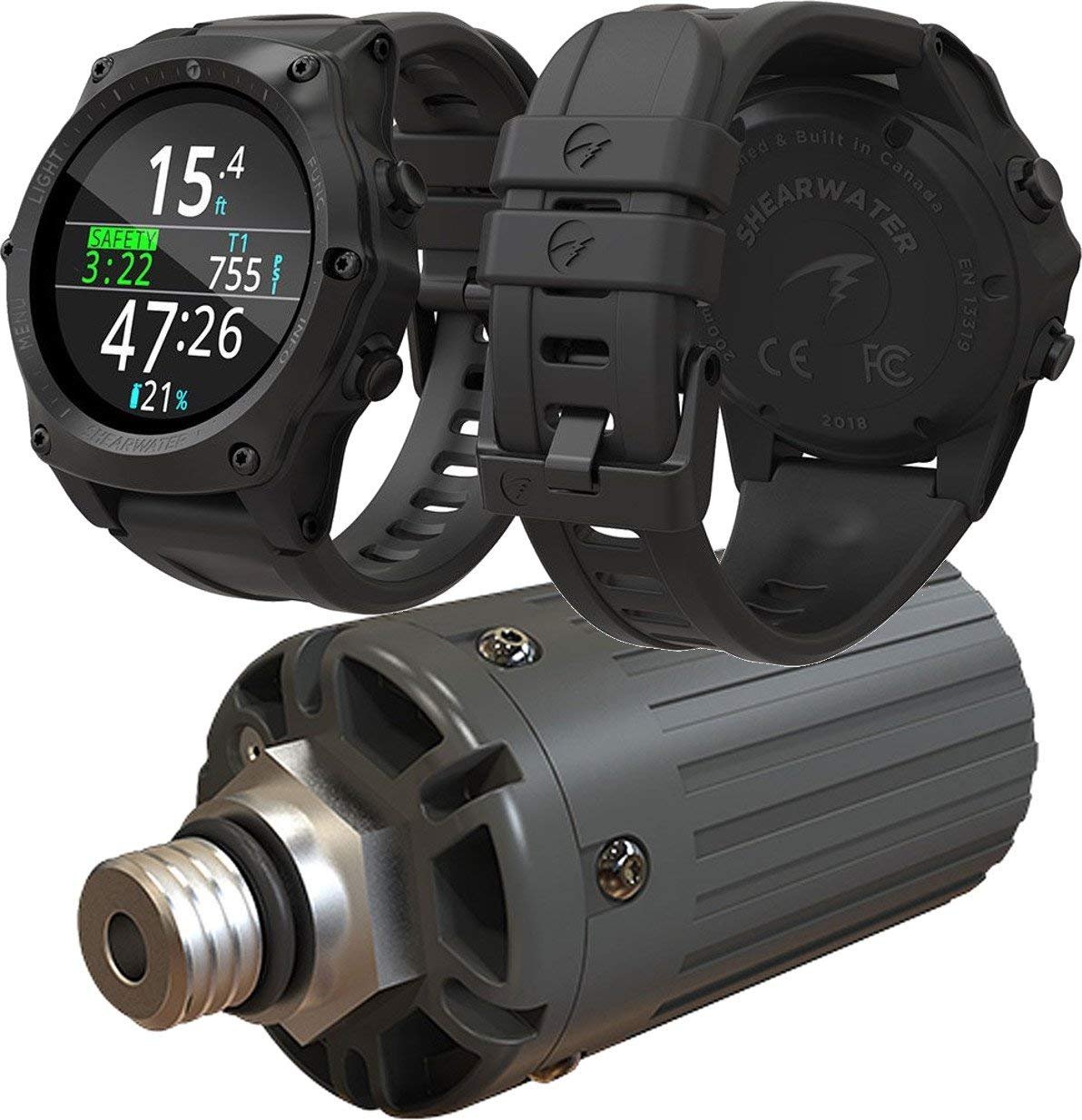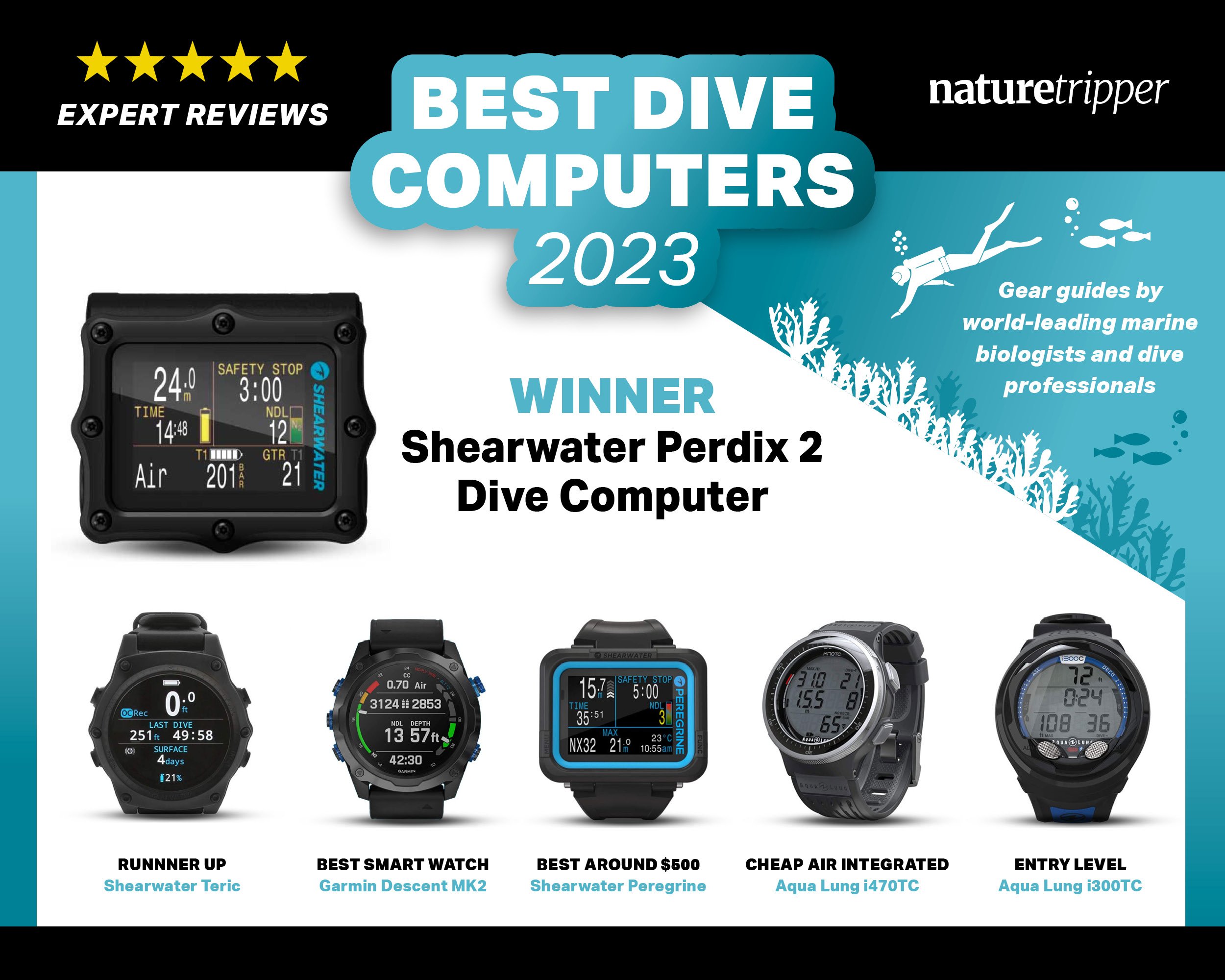Shearwater Teric Dive Computer Review [2025]
As a reader-supported, independent site, we may earn affiliate commissions at no extra cost to you. Thanks for supporting our work!
This Shearwater Teric review is by world-expert marine biologist, Dr Simon Pierce, co-founder of the Marine Megafauna Foundation and leader of the Global Whale Shark Program. Simon is also an award-winning underwater photographer who has done thousands of dives worldwide.
Overview
Watch-style • Air Integrated • Color AMOLED • Full Tech Features
The Shearwater Teric is an incredible dive computer, and was my overall pick for best dive computer two years running. It’s packed with features that both recreational and technical divers appreciate. It’s air-integrated, has a clear, bright, full-color crystal AMOLED screen, an easy-to-use interface, and customizable display metrics and colors.
If you’re after a tech-capable dive computer you can wear as a watch between dives, the Teric is a fantastic option.
Preparing this review, I put out a call for additional user reviews from my friends (which include lots of marine biologists and dive professionals):
“For me, the less thinking I have to do to figure it out, the better. The downloadable data is cool, the display is perfect, UI is decent (not my fav, but still intuitive), size is perfect. I don’t want to have to think. It just feels like I always have the right information when I need it. Some computers share too much info and start flashing and beeping for minor reasons; others have warnings that are easy to miss. The Teric seems to be the Goldilocks of computers, but that might just be my settings.”
“Love the color display, big enough numbers and letters for my aging eyes, it’s rechargeable! Not unreasonably crazy sensitive like my old Suunto, that would inexplicably lock me out even though I was diving the same profile as 10 other divers.”
“Love my Teric. Such an easy readable colour display. Much easier than other larger screens. Recently been using it tech mode with ease. Customisation is also really well thought out and easy. Suits my geekness :)”
So that was obviously a positive start.
Many people love watch-style dive computers, but many models lack a good screen, decent battery life, and clear information display. The Teric solved all that when it came out in 2018, and ever since it’s been one of the most popular computers among dive professionals and tech divers.
The Shearwater Teric is literally brilliant. The sleek edge-to-edge screen allows for big, clear text. It's got a deep feature set for technical dives that are testing the limits, while remaining intuitive to use for new divers.
Shearwater dive computers have long been a high-end choice, and the Teric is one of the best overall computers on the market right now.
The Shearwater Teric offers (optional) wireless air integration with a separate transmitter, which you can take advantage of in this package. I use and recommend air integration, as it allows you to track all the important information underwater with one glance.
Lots of experienced divers loved the idea of integration (being able to see your tank pressure on your dive computer), but didn’t trust it – with good reason, as early versions were flakey at best. I’ve been using Shearwater’s implementation since 2017, and it’s been rock solid – I love it.
What I love about the Shearwater Teric Dive Computer
Make it your own:
Watch-style computer for comfortable all-day use.
Various colored straps available for personalization.
Customizable watch faces and display colors.
Tough construction, including hard-to-scratch sapphire crystal glass.
Full Tech Diving Capabilities
Fully tech-capable but intuitive enough for everyday divers.
Supports trimix, closed-circuit rebreathers
Air integrated, so you can check your tank pressure from the computer directly (the required transmitter/s are sold separately, but you can buy them together as a package), and can communicate with two transmitters.
Customizable haptic (vibration) alarms for alerts – much preferable to audible signals when you’re diving with a group.
Digital compass that’s a reliable 3-axis, tilt-compensated.
Wireless Charging Dock included.
Easy to use, even for complete beginners
It doesn’t lock you out if you have to skip a safety stop, but does incorporate this into its dive calculation.
It’s bright and easy to read underwater. Fantastic contrast with a full-color crystal AMOLED screen.
Intuitive navigation with labeled buttons.
Good battery life (30hrs+ in dive mode), with simple wireless charging via the included dock or on a smartphone charger.
The included charging dock also allows you to easily top up the Teric’s battery every few days without accessing a waterproof compartment to charge the computer, so that reduces flooding risk.
Modern Technology
Bluetooth connectivity to the Shearwater app for downloading dive data.
Easy wireless software/firmware update. Shearwater has a good history of extending and expanding the capabilities of its products.
Shearwater has an excellent reputation for supporting its products, giving you the assurance that this fantastic hardware will keep receiving the latest software updates for years to come.
Things to consider when buying the Shearwater Teric
Doesn’t offer smartwatch features. GPS would have been nice.
Chunky compared to a normal watch.
Only connects with two transmitters, which could limit some tech divers.
Vibration alerts can be missed (by some) through thick wetsuits or drysuits.
Button design tends to accumulate salt crystals, so a good soak after use is needed.
Shearwater Teric vs Suunto D5
The Suunto D5 is a powerful watch-style dive computer, similar to the Teric, and some people prefer its look for everyday wear. However, for me it falls short with only half the battery life of the Teric, and its screen isn’t as bright. They are around the same price, with Suunto just a fraction cheaper, so if you're already eyeing the Suunto, you might want to consider nudging your budget a bit to grab the Teric.
That said, my dive shop owner buddy loves his Suunto D5 and has no complaints about the brightness or battery life. If he’s on liveaboards doing multiple dives a day, he just makes sure to charge a little as needed between dives.
If you’re considering the Suunto D5 over the Teric, check out this video for a comparison:
Shearwater Teric vs Garmin Descent Mk2i
The Garmin Descent MK2i is an all-round multi-sport smartwatch AND dive computer, whereas the Shearwater Teric is solely focused on diving. The Garmin is much more expensive than the Teric, though if you utilise the other sports features then it's well worth it. Both feature full tech capabilities, and the Garmin can GPS track your exact dive entry and exit points, which is a very handy feature.
Both are air-integrated, and Garmin Descent MK2i can pair to 5 transmitters in their AI package - great for families or guides. It's really a matter of personal preference: go for the Teric for a top-notch diving-focused experience, or pick the Garmin MK2i if you're after a versatile multisport smartwatch with excellent diving capabilities.
Shearwater Teric vs Apple Watch Ultra
The Apple Watch Ultra, priced lower than the Teric, caters to casual divers who seek a smartwatch for daily use and are fine without advanced diving features like air integration. It comes with useful offerings such as underwater haptic alerts and detailed dive logs. However, if you need a dedicated top-tier dive computer, particularly for air integration, extended battery life, and advanced dive capabilities, the Shearwater Teric is the way to go.
Choose based on what you value most – for iOS users, the Apple Watch may be a great fit; for advanced diving capabilities, go for the Teric.
Shearwater Teric vs Shearwater Perdix 2
The Shearwater Teric and Perdix 2 both have full tech diving capabilities coupled with bright, clear screens. Priced about the same, the main difference is that the Shearwater Teric is a smaller wristwatch-style computer designed to wear between dives as a watch, whereas the Perdix has a larger slate-style screen that’s only for diving. This larger screen means the Perdix text is bigger and easier to read. The Perdix also has a user-replaceable battery, which some divers (like me) prefer over having to recharge nightly during longer diver trips, as you do with the Teric.
Speaking from personal experience, I've been a happy Perdix AI user for 6 years, and Mads has recently begun using the Perdix 2. We can both attest to its large, clear display that remains easy to read, even when attached to our cameras and held at arm's length. But if you’re set on a wristwatch form-factor, the Teric is a near-perfect dive computer.
Shearwater Teric vs Shearwater Peregrine
The Shearwater Peregrine Dive Computer is for the everyday recreational diver, whereas the Shearwater Teric is for more demanding divers who appreciate air-integration and the ability to wear your computer as a watch between dives. The Peregrine has a bright, clear, full-color LCD display, a simplified recreational mode, and an intuitive interface. It’s the more affordable version of the Perdix 2.
The Peregrine is an amazing computer - if only it had air integration then it’d be competitive for my overall best dive computer of the year. If you want a reliable, straightforward, and more budget-friendly dive computer, the Peregrine is the best fit.
You can check out my full Peregrine review, here.
Still looking at options?
You can read our full guide to the Best Dive Computer in 2025 which details the models above in more detail, and also our comparison guide, Shearwater Dive Computers: Which is Best For You, is perfect if you’re team Shearwater, but unsure which model to go for.

